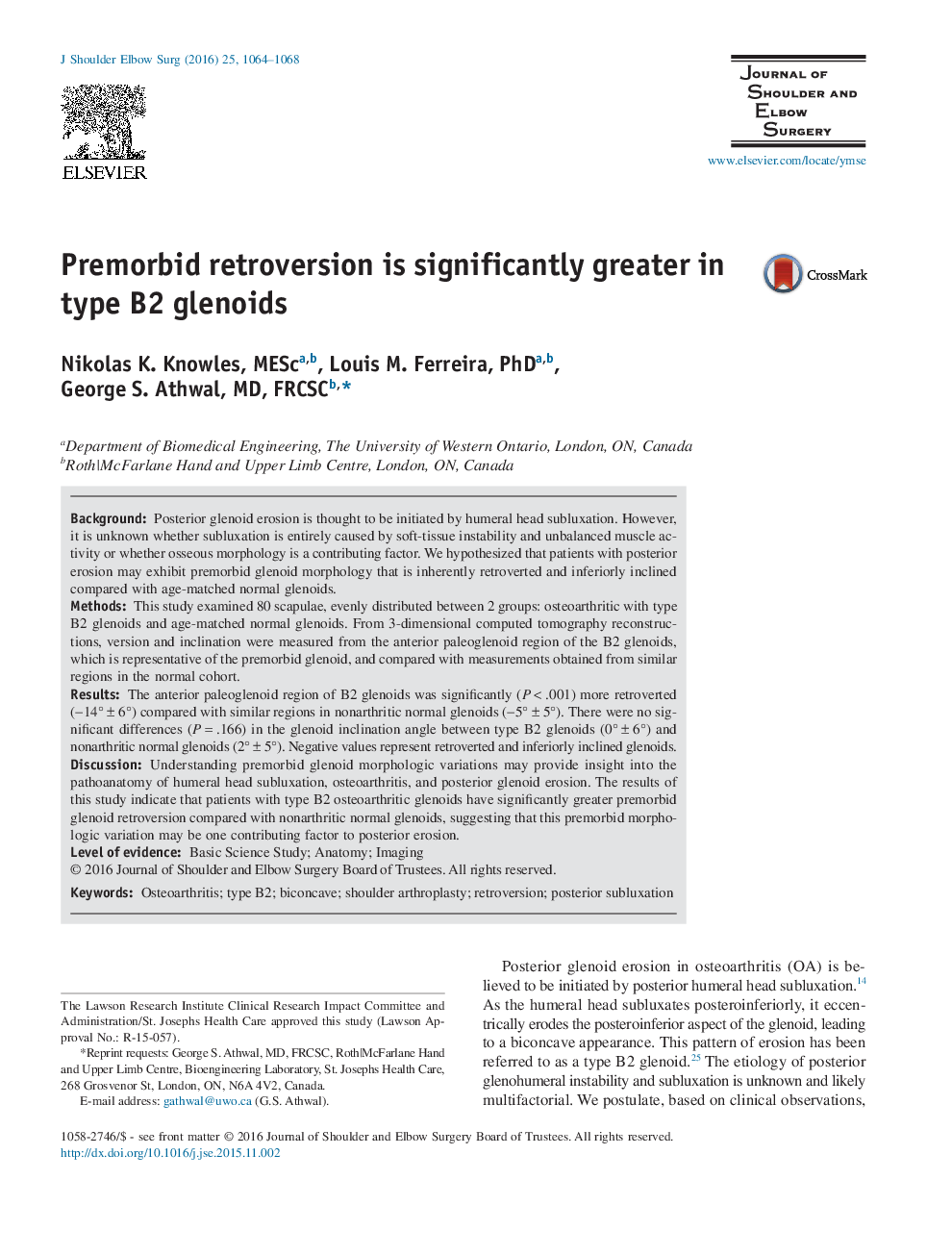| Article ID | Journal | Published Year | Pages | File Type |
|---|---|---|---|---|
| 4072967 | Journal of Shoulder and Elbow Surgery | 2016 | 5 Pages |
Background:Posterior glenoid erosion is thought to be initiated by humeral head subluxation. However, it is unknown whether subluxation is entirely caused by soft-tissue instability and unbalanced muscle activity or whether osseous morphology is a contributing factor. We hypothesized that patients with posterior erosion may exhibit premorbid glenoid morphology that is inherently retroverted and inferiorly inclined compared with age-matched normal glenoids.Methods:This study examined 80 scapulae, evenly distributed between 2 groups: osteoarthritic with type B2 glenoids and age-matched normal glenoids. From 3-dimensional computed tomography reconstructions, version and inclination were measured from the anterior paleoglenoid region of the B2 glenoids, which is representative of the premorbid glenoid, and compared with measurements obtained from similar regions in the normal cohort.Results:The anterior paleoglenoid region of B2 glenoids was significantly (P < .001) more retroverted (−14° ± 6°) compared with similar regions in nonarthritic normal glenoids (−5° ± 5°). There were no significant differences (P = .166) in the glenoid inclination angle between type B2 glenoids (0° ± 6°) and nonarthritic normal glenoids (2° ± 5°). Negative values represent retroverted and inferiorly inclined glenoids.Discussion:Understanding premorbid glenoid morphologic variations may provide insight into the pathoanatomy of humeral head subluxation, osteoarthritis, and posterior glenoid erosion. The results of this study indicate that patients with type B2 osteoarthritic glenoids have significantly greater premorbid glenoid retroversion compared with nonarthritic normal glenoids, suggesting that this premorbid morphologic variation may be one contributing factor to posterior erosion.
